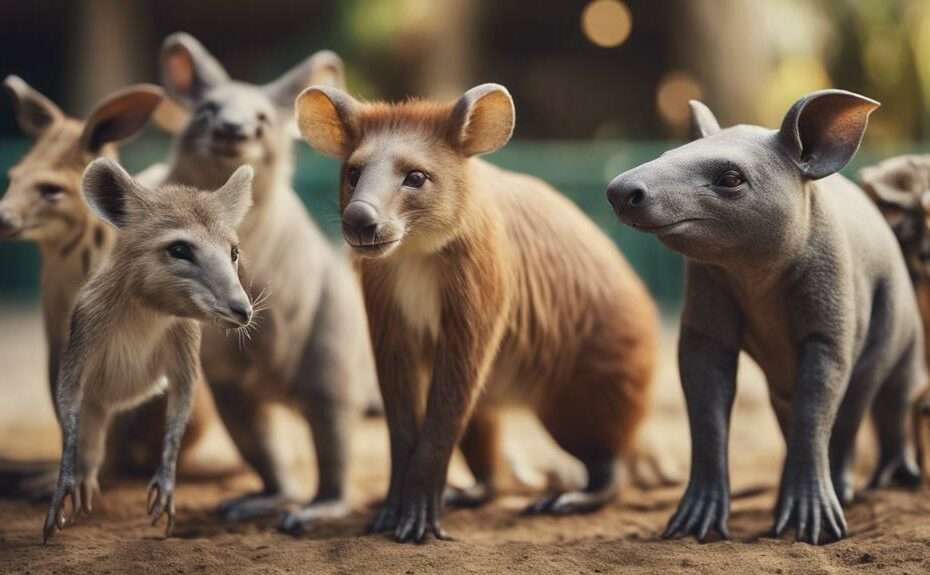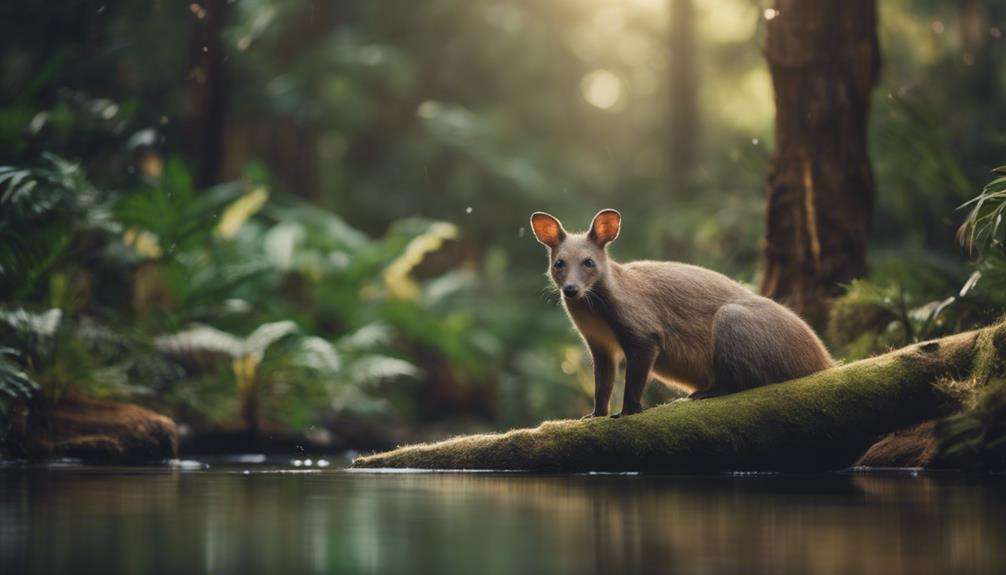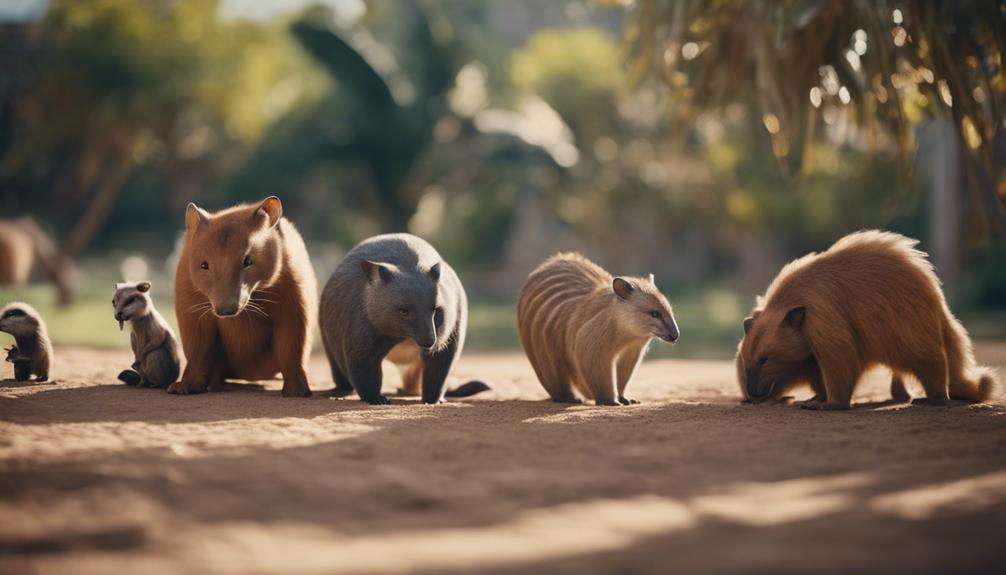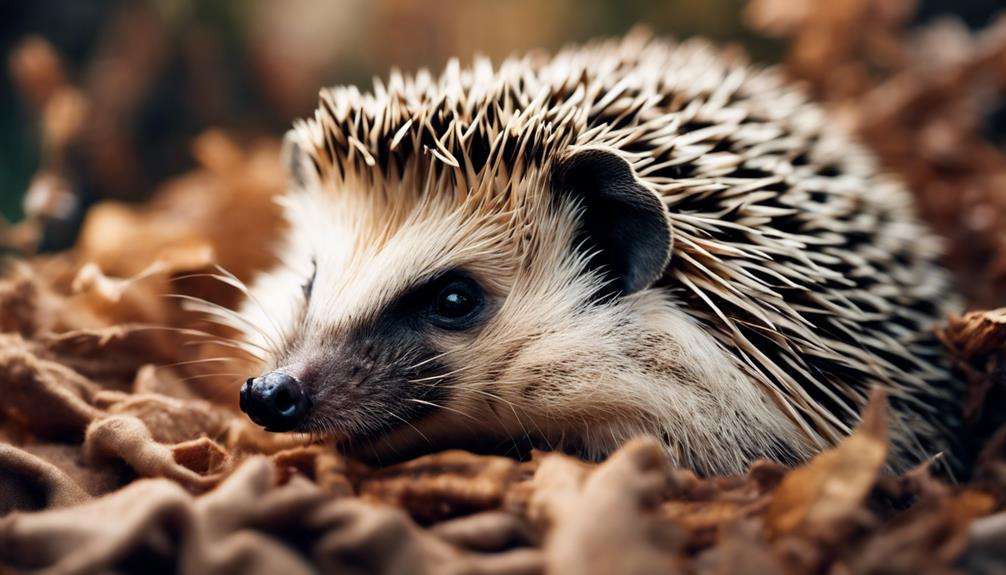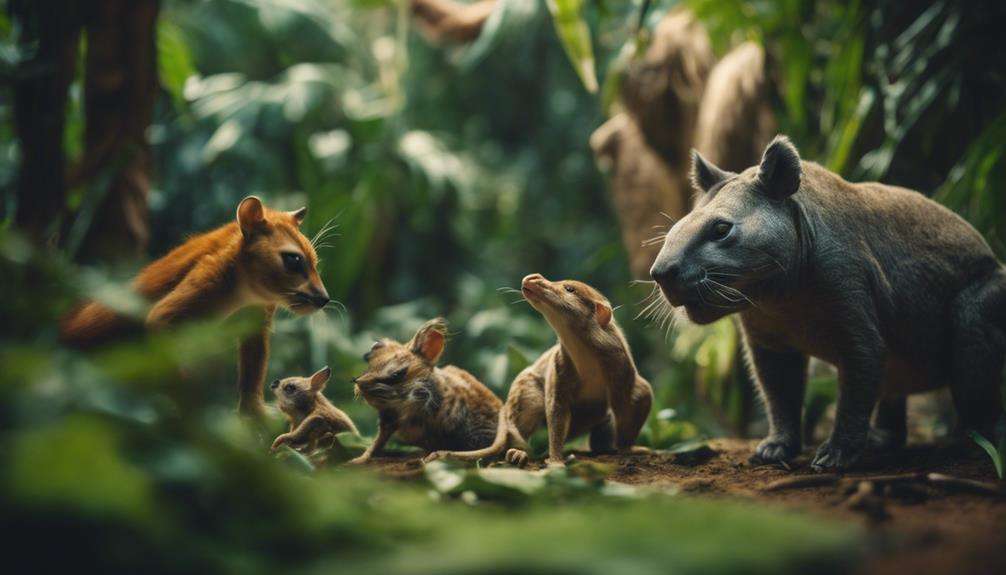When it comes to breeding unusual mammals, the saying 'look before you leap' couldn't be more apt. Ensuring the proper regulations are in place can make all the difference in safeguarding these unique creatures.
From understanding legal frameworks to implementing species-specific guidelines, there are crucial tips to consider. By following these seven essential guidelines, you can navigate the complexities of breeding rare mammals with care and responsibility.
Key Takeaways
- Obtain necessary permits and comply with federal and state laws for breeding unusual mammals.
- Implement species-specific guidelines for optimal breeding environments and well-being.
- Prioritize genetic diversity, prevent inbreeding, and understand reproductive behaviors for successful breeding.
- Maintain facility standards, record breeding activities, and seek expert guidance for responsible breeding practices.
Legal Framework Overview
Breeding unusual mammals often requires permits and adherence to federal and state laws to ensure compliance with regulations aimed at preventing illegal wildlife trade and promoting animal welfare. The legal framework surrounding the breeding of exotic mammals is of utmost importance. Understanding the regulatory implications is crucial for breeders to operate within the bounds of the law. These regulations vary depending on the species of mammal and the location of the breeding facility.
The overview of the legal framework provides breeders with a roadmap to navigate the complexities of breeding exotic mammals. By familiarizing yourself with the regulations, you can ensure that your breeding practices align with the law and contribute to the conservation of these species. Breeding exotic mammals without the necessary permits can have severe consequences, including hefty fines, legal actions, and the confiscation of animals. Therefore, it's essential to prioritize compliance with regulatory requirements to maintain the welfare of the animals and prevent illegal wildlife trade.
Licensing Requirements
To legally breed unusual mammals, obtaining a license from state wildlife authorities is imperative to ensure compliance with specific regulations. When navigating the licensing process, consider the following:
- Research Species-Specific Guidelines: Licensing requirements for breeding unusual mammals vary based on the species and location. It's crucial to research and understand the specific guidelines for each species you intend to breed.
- Understand Breeding Restrictions: Some states have strict regulations on breeding exotic or uncommon mammals to prevent illegal wildlife trade and protect native species. Familiarize yourself with any breeding restrictions that may apply to the species you're interested in breeding.
- Meet Criteria for Licensing: Breeders must meet certain criteria, including facility standards, animal welfare protocols, and genetic conservation goals, to obtain a breeding license. Ensure you fulfill all necessary requirements to qualify for a license.
- Compliance Importance: Failure to comply with licensing requirements for breeding unusual mammals can lead to fines, legal actions, and even confiscation of animals. It's essential to adhere to all regulations to avoid potential consequences.
Species-Specific Guidelines
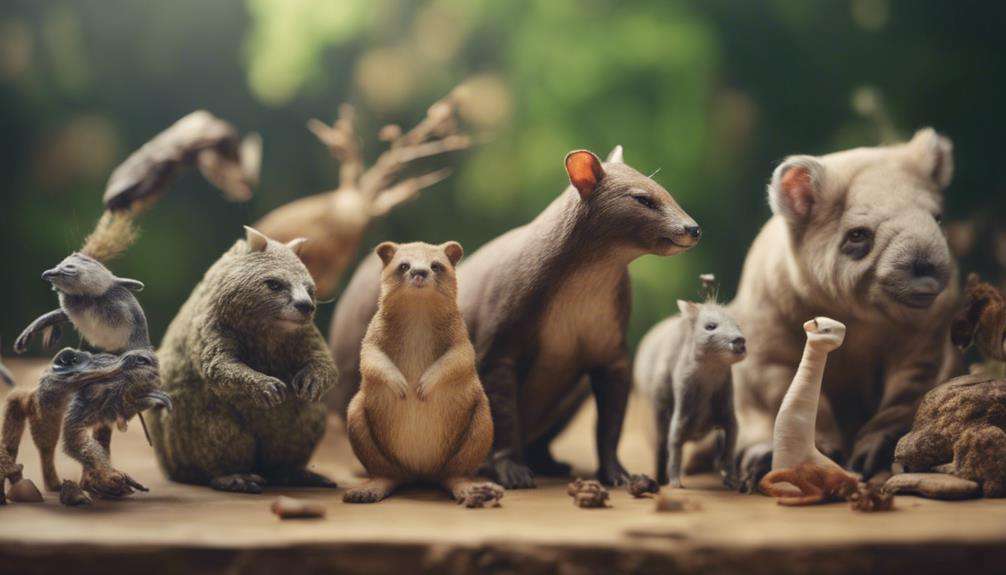
To ensure successful breeding of unusual mammals, it's essential to understand their specific habitat requirements and reproductive behaviors.
By researching and implementing species-specific guidelines, you can create suitable environments and breeding conditions that cater to the unique needs of each species.
This knowledge will optimize breeding outcomes and contribute to the well-being of the animals in your care.
Habitat Requirements
Understanding the specific habitat requirements of unusual mammal species is crucial for ensuring their well-being and successful reproduction. To create an ideal habitat for breeding these mammals, consider the following:
- Enrichment Activities: Provide opportunities for natural behaviors like foraging, climbing, or burrowing to keep the mammals mentally stimulated and physically active.
- Naturalistic Design: Mimic the natural environment of the species by incorporating elements such as rocks, trees, or water features to create a more authentic habitat.
- Environmental Factors: Monitor and regulate temperature, humidity, light exposure, and terrain to match the species' natural habitat conditions.
- Consultation: Seek guidance from experienced breeders, wildlife experts, or veterinarians to ensure the habitat meets the specific needs of the unusual mammal species.
Reproductive Behavior
Consider studying the reproductive behavior of unusual mammal species to implement species-specific guidelines crucial for successful breeding programs. Understanding the intricacies of parental care and social interactions is essential for fostering a conducive environment for breeding.
Each species may exhibit unique mating seasons, courtship rituals, and social structures that impact their reproductive success. Tailoring management approaches to accommodate these variances is key to achieving positive breeding outcomes.
Facility Standards
Ensure that your breeding facility meets the necessary space requirements for housing unusual mammals, providing adequate room for movement and environmental enrichment.
Implement strategies to promote the well-being of the mammals, such as enrichment activities and proper enclosure design.
Additionally, establish strict health and safety protocols to ensure a clean and safe environment for both the animals and staff.
Space Requirements for Housing
Meeting the space requirements for housing unusual mammals is essential to ensure their physical and mental well-being in breeding facilities. When considering space requirements for housing, make sure to:
- Allow ample room for enrichment activities to stimulate natural behaviors.
- Provide space that encourages social interactions among the mammals.
- Ensure there are opportunities for exercise to promote physical health.
- Design the housing facilities to meet the specific behavioral needs of the unusual mammals being bred.
Environmental Enrichment Strategies
To optimize the physical and mental well-being of unusual mammals in breeding facilities, implementing robust environmental enrichment strategies is crucial. Sensory stimulation and social interactions play vital roles in maintaining the overall health of captive animals. Providing varied habitats, toys, and activities can reduce boredom and stress, mimicking natural behaviors and promoting psychological well-being.
Enrichment programs should offer opportunities for foraging and encourage social interactions among conspecifics to enhance cognitive function and reduce stereotypic behaviors. It's essential for facilities to adhere to industry standards and regulations concerning environmental enrichment to ensure the welfare of the animals.
Regular evaluation and adjustment of enrichment programs based on the animals' behavior and preferences are fundamental for successful breeding and care.
Health and Safety Protocols
Strict adherence to health and safety protocols is paramount in maintaining optimal facility standards for breeding unusual mammals. To ensure the well-being of the animals and staff, consider the following:
- Disease prevention and biosecurity measures: Implement strict protocols to prevent the spread of diseases within the facility.
- Sanitation practices and facility maintenance: Regularly clean and disinfect the premises to maintain a hygienic environment.
- Adequate housing and living conditions: Provide suitable habitats that cater to the specific needs of the unusual mammals being bred.
- Quarantine procedures for new animals: Follow proper isolation protocols to prevent the introduction of pathogens into the breeding facility.
Health and Welfare Protocols
When breeding unusual mammals, ensuring strict adherence to health and welfare protocols is imperative to safeguard against disease outbreaks and promote the well-being of the animals. Genetic management plays a crucial role in maintaining the health and vitality of the breeding stock, reducing the risk of hereditary diseases within the population. Disease prevention strategies, including regular veterinary check-ups and vaccinations, are essential to uphold the overall health of both parent animals and offspring.
Nutritional needs must be carefully considered and met to support the specific dietary requirements of the unusual mammals being bred. Providing a well-balanced diet tailored to their unique nutritional needs is vital for their growth and reproductive success. Additionally, incorporating behavioral enrichment activities into their daily routine can help stimulate natural behaviors, reduce stress, and enhance their overall well-being during the breeding process.
Monitoring the breeding program closely allows for the early identification of any signs of stress, illness, or behavioral issues in the unusual mammals. This proactive approach enables prompt intervention and support, ensuring the animals' health and welfare are prioritized throughout the breeding process.
Breeding Practices
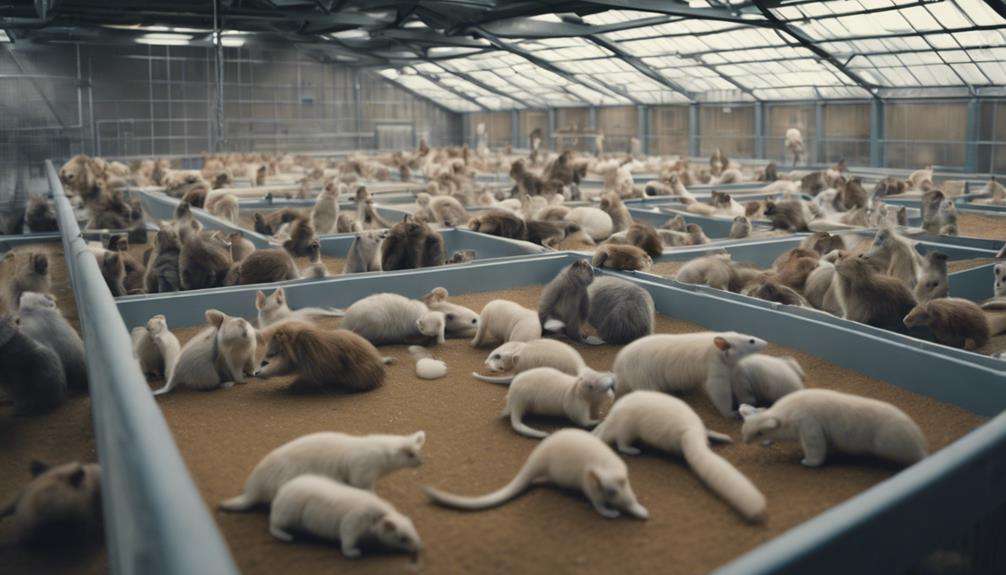
Breeding unusual mammals necessitates careful consideration of special permits and compliance with local, state, and federal regulations to ensure responsible and ethical practices. When engaging in breeding practices for unusual mammals, it's crucial to prioritize genetic diversity and conservation efforts.
Here are four essential tips to guide your breeding practices:
- Maintaining Genetic Diversity: Prioritize genetic diversity in breeding programs to prevent inbreeding and promote the health and vitality of the population.
- Record-Keeping: Properly document breeding activities, genetic information, and pedigrees to track lineage and ensure responsible breeding practices.
- Consulting Experts: Seek guidance from veterinarians, geneticists, and other professionals to guarantee the well-being of the animals and adhere to the best breeding practices.
- Contributing to Conservation: Aim to contribute to conservation efforts, species preservation, and the overall welfare of the animals through your breeding initiatives.
Compliance Monitoring
To ensure compliance with regulations and standards governing the breeding of unusual mammals, breeders must engage in thorough monitoring practices to uphold the welfare and legality of their operations. Inspection protocols play a crucial role in this process, as regular inspections and oversight help prevent illegal breeding practices and ensure the well-being of the animals.
Record keeping is essential for compliance monitoring, requiring breeders to maintain accurate records of breeding activities, births, deaths, and transfers of unusual mammals.
Enforcement measures are in place to address non-compliance with breeding regulations. Wildlife authorities may conduct surprise visits to breeding facilities to verify compliance with regulations and address any potential issues promptly. It's important for breeders to be prepared for such surprise visits and ensure that their operations are in line with the established standards.
Failure to comply with breeding regulations can lead to fines, penalties, and even the confiscation of unusual mammals to safeguard their welfare. By adhering to inspection protocols, maintaining detailed records, and being vigilant about compliance, breeders can ensure the sustainability and ethical practice of breeding unusual mammals.
Frequently Asked Questions
What Are the USDA Regulations for Marine Mammals?
To understand USDA regulations for marine mammals, consider breeding protocol and IACUC regulations. Facilities must comply with standards for enclosures, care, and genetic diversity to ensure well-being. Violations may lead to fines or license revocation.
What Is the Main Document That the USDA Uses for All Regulations Regarding Animal Research?
The Animal Welfare Act (AWA) serves as the main document for all US Department of Agriculture regulations regarding animal research. It sets standards for the care and treatment of animals used in research, ensuring their well-being.
What Are the Regulations for Using Animals in Research?
To ensure ethical considerations and animal welfare in research, follow regulations mandating approval by IACUC, using the minimum animals necessary, providing proper care, considering alternatives, and minimizing pain. Regular inspections ensure compliance.
What Is the Breeding Protocol for Iacuc?
When following IACUC's breeding protocol, remember that strict breeding guidelines are crucial. Ethical considerations are paramount for ensuring animal welfare. You must adhere to approved plans and provide proper care to maintain genetic diversity and health.
Conclusion
Congratulations on completing the regulations for breeding unusual mammals! Remember, following guidelines is key to ensuring the well-being of these unique creatures.
Now, go forth and protect the rare mammals with your knowledge and dedication. Just don't forget, breeding these unusual mammals is no walk in the park – it requires careful attention and adherence to regulations to truly make a difference.
Keep up the good work!
